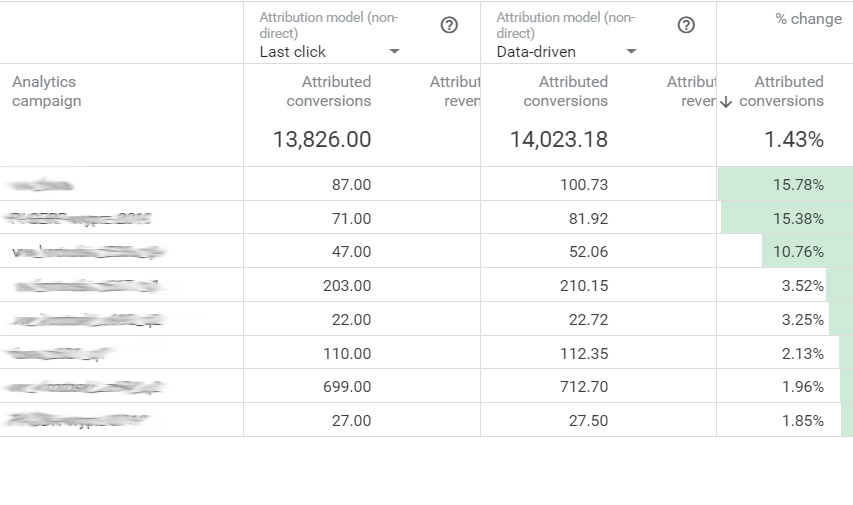The data-driven attribution model has so far only been available in the paid version of Google Analytics: version 360. However, for several months as part of the Attribution report, which is still in beta, all Google Analytics users can freely analyze data about their conversions in the data-driven attribution model.
The advantages of the data driven model over position-based models
- The data-driven model not only takes into account the position of a given channel on the conversion path but also analyzes the impact of each individual click on conversions based on advertising data.
- In the data driven model, not only paths that cause conversion are analyzed.
- Variables such as time from conversion, device type, number of ad interactions, the order of ad exposure and the type of creative assets are taken into account in this model.
- It is based mainly on the latest conversion data, so must be constantly fed new data to be up to date.
The effect of analyzing the data-driven model is to indicate which touchpoints are most likely to drive conversions based on the likelihood calculated from the Shapley value, and to use Google’s advanced machine learning.
We can read in The definitive guide to data-driven attribution published by Google that: “Data-driven attribution creates a “single source of truth” about marketing performance that unifies and completes your analytics toolset. While other tools provide specific insights, data-driven attribution provides an overall view of marketing performance.”
Read also: Beyond aesthetics: How design systems impact business?
Examples of data driven model operation
All standard reports in Google Analytics use the last click attribution model. In this model, 100% of the credit is attributed to the last traffic source (excluding direct). According to this model, if in the last month we had 28 paths during which the user switched from the paid search channel to organic search and generated a conversion, all the credit for generating 28 conversions will be assigned to the organic search channel, which is not entirely justified.
In this case, the data-driven model, which definitely takes into account more factors than the standard last click attribution models, will work better here. It turns out in this particular case that the paid search channel is not completely useless in terms of the effectiveness of attribution generation. You may even find for example that the paid search channel is more likely to generate conversions than the organic search channel – impossible to discover by limiting yourself to analysis using last click attribution. All this will be very important in the comprehensive assessment of this channel using a data driven model.

In the attribution report, we also easily compare any other attribution model to the data-driven model to better understand where the differences occur and which channels or specific campaigns, have been underestimated by us so far.

Requirements
To use the analysis using a data-driven attribution model, simply start a new project, select the account, service and data view that you want to analyze, and about 30 days after starting the project, your data will become available for analysis. The only requirement for the conversion that you want to analyze is a minimum number of conversions over the last 30 days, numbering 600 for each distinct conversion.
What next?
Although the data-driven model is currently available to everyone and for free, you will need support in the form of an agency or a good analyst who will help you use the potential of this model and make good business decisions. I strongly recommend that you contact Efigence, where you will receive this professional help.
Read also: User research methods in times of crisis




